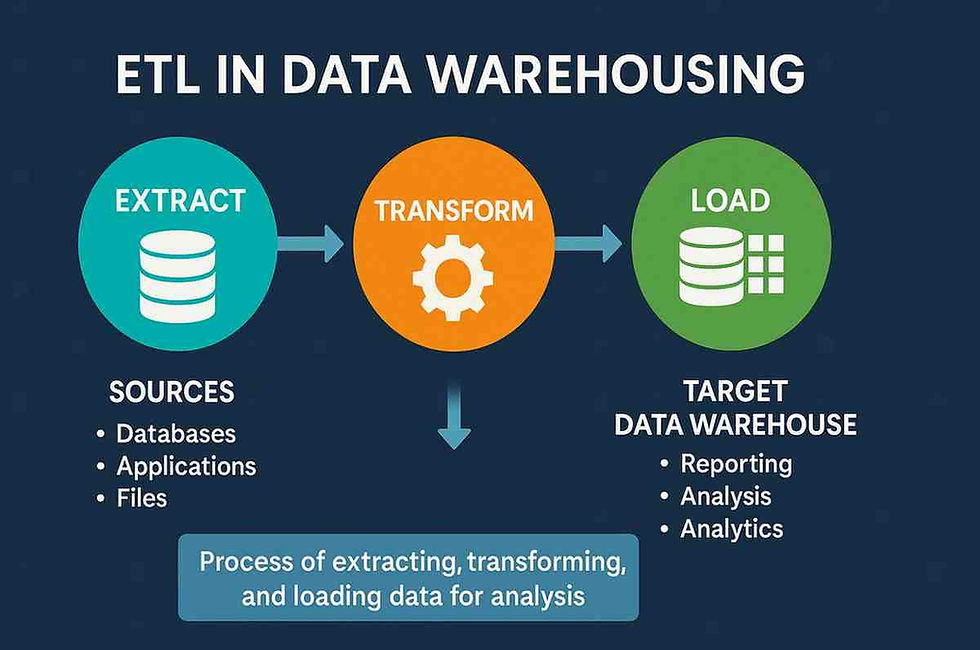What Is Error Code 403? Fix & Avoid This Issue Fast
- Gunashree RS
- Apr 12
- 5 min read
Introduction to Error Code 403
You've probably come across a message that says "403 Forbidden – You don’t have permission to access this resource." It can be frustrating, especially when you don’t know what it means or how to fix it. Error code 403 is more common than you think—and understanding it is the first step to solving it.
In this comprehensive guide, we'll explore everything about error code 403: its meaning, causes, solutions, and how to avoid it. Whether you're a casual browser, a developer, or a website owner, this article will help you master the 403 error once and for all.

Understanding HTTP Status Codes
What Is an HTTP Status Code?
An HTTP status code is a 3-digit number sent by a server to indicate the outcome of a client's request. These codes inform your browser about whether the request was successful, redirected, encountered an error, or denied.
Categories of HTTP Status Codes
1xx – Informational: Request received, continuing process.
2xx – Success: The action was successfully received and accepted.
3xx – Redirection: Further action needs to be taken to complete the request.
4xx – Client Error: The request contains bad syntax or cannot be fulfilled.
5xx – Server Error: The server failed to fulfill a valid request.
What Is Error Code 403?
The Definition of Error Code 403
Error code 403, also known as 403 Forbidden, is an HTTP status code that occurs when a server understands your request but refuses to authorize it. In simple terms, you're not allowed to access the resource.
Error Code 403 vs. Other 4xx Errors
403 Forbidden: The Server understood the request but refused to authorize it.
401 Unauthorized: Requires authentication credentials.
404 Not Found: The server can’t find the requested resource.
400 Bad Request: The server cannot process the request due to a client error.
Common Causes of Error Code 403
Incorrect File or Folder Permissions
Improper settings in file permissions (especially on Apache or NGINX servers) can cause 403 errors. Files need to be readable by the web server.
IP Address Blocking
Web servers may deny access to certain IP ranges for security or geographic reasons.
Faulty .htaccess File
Misconfigured .htaccess rules can lead to accidental access denial.
Restrictions from Hosting Providers
Your hosting service may restrict certain content or IPs, especially if you're using shared hosting.
How Error 403 Appears in Different Browsers
Different browsers and systems might display the error differently:
How to Fix Error Code 403
Fix #1: Check and Reset File Permissions
Set your file permissions to:
Folders: 755
Files: 644
Fix #2: Clear Browser Cache and Cookies
Cached login sessions can create issues. Clear your cookies and cache, then refresh the page.
Fix #3: Review and Edit .htaccess File
Comment out or delete suspicious lines in .htaccess using a code editor or your hosting file manager.
Fix #4: Disable WordPress Plugins (if applicable)
In WordPress, plugins might block access due to firewall rules. Disable them one by one to isolate the issue.
Fix #5: Contact Your Web Hosting Provider
If all else fails, your hosting support can check server logs or security rules.
How to Prevent 403 Forbidden Errors
Maintain Correct Permissions
Ensure file and folder permissions are set correctly and follow best practices.
Whitelist Trusted IPs
Allow IP addresses for trusted users to avoid unintentional denial.
Regularly Audit .htaccess Rules
Avoid outdated or buggy rewrite rules that can block legitimate traffic.
Monitor Server Logs
Review error logs regularly to catch forbidden requests early.
403 Errors in WordPress: Special Fixes
Deactivating Plugins and Themes
A faulty plugin or theme can restrict access. Deactivate them via FTP or your host's control panel.
Regenerating the .htaccess File
You can delete your existing .htaccess file and let WordPress regenerate it via the Permalinks settings.
Checking for File Ownership Issues
Sometimes, files uploaded by different users can confuse the server. Ensure all are owned by the correct user account.
403 Forbidden on Mobile Devices
Try switching to Wi-Fi if mobile data is blocked.
Use VPNs cautiously, as some are flagged by servers.
Clear your mobile browser's cache and cookies.
SEO Impact of 403 Forbidden Errors
Search Engine Crawl Issues
403 errors prevent bots from indexing content, harming your visibility.
Impact on User Experience and Rankings
Poor user experience due to inaccessible content can drop your site's ranking and bounce rate metrics.
Error 403 and Cybersecurity Concerns
DDoS Prevention
Some firewalls return 403s to suspicious bots as a first layer of DDoS mitigation.
IP Filtering and Access Rules
You might use .htaccess or server configs to block harmful users by returning 403 responses.
Tools to Diagnose and Fix 403 Errors
FAQs About Error Code 403
Q1: What does "403 Forbidden" mean?
A: It means your request was understood but the server refuses to grant access.
Q2: Is error 403 a client-side or server-side issue?
A: It's mostly server-side but can be influenced by browser or plugin settings.
Q3: How do I fix a 403 error on my WordPress site?
A: Deactivate plugins, check .htaccess, and verify permissions.
Q4: Can a firewall cause a 403 error?
A: Yes, many security plugins or server firewalls block access by returning a 403.
Q5: Why am I seeing a 403 error only on mobile?
A: It could be due to blocked IP ranges or cookie/session issues on your mobile browser.
Q6: Does a 403 error affect SEO?
A: Yes. Pages that return 403 can't be crawled or indexed, which hurts visibility.
Q7: How long does it take to resolve a 403 error?
A: Anywhere from minutes to hours depending on the cause.
Q8: Can hosting providers fix this for me?
A: Absolutely. Hosting support can help fix permissions or security restrictions.
Conclusion
Error code 403 may seem like a roadblock, but with the right approach, it’s entirely manageable. From checking file permissions to editing your .htaccess file, resolving this issue is often a matter of small tweaks. Website owners, developers, and even casual users need to understand this error because it not only affects access but can also impact SEO and user trust.
✅ Key Takeaways
Error 403 means access is denied by the server.
Common causes include permissions, .htaccess rules, and IP blocks.
Clear cache, review server settings, and use error logs to diagnose.
WordPress users should watch for plugin conflicts and theme issues.
Prolonged 403 errors can harm SEO and user experience.




Link INDOVIP138
indovip138
indovip138
indovip138
indovip138
indovip138
indovip138
indovip138
indovip138
indovip138
indovip138
indovip138
indovip138
indovip138
indovip138
indovip138
indovip138
indovip138
indovip138
indovip138
indovip138
indovip138
indovip138
indovip138
indovip138
indovip138
indovip138
indovip138
indovip138
indovip138
indovip138
indovip138
indovip138